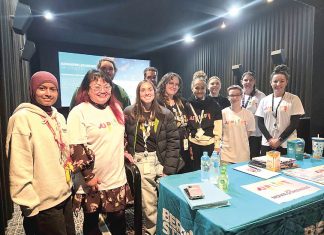Latrobe Valley Express journalist FARRAH PLUMMER held a forum to discuss one of the most topical issues in the Latrobe Valley: the future of the region’s brown coal resource.
The question: Should we continue to use the brown coal resource for power generation and other products, or should we invest in alternative industries like renewable energy or manufacturing?
Community support to develop the brown coal resource for power generation or niche export products in the Latrobe Valley since the Hazelwood mine fire remains unclear.
While coal stakeholders have suggested a heightened awareness of future coal development since the 45-day fire and newspaper reports State Government is “quietly shelving” coal allocation announcements prior to the state election, others speak of the region’s unchanging loyalty to the resource.
On 19 October the Sunday Age reported a senior government insider had said no coal announcements would be made before the election, considering disquiet over the fire and fear it would cost seats in Morwell and inner city Prahran.
Member for Morwell and Energy and Resources Minister Russell Northe, however, has denied any delays to the contentious 13 billion tonne coal allocation in spite of the looming election.
He argued the announcement of the Advanced Lignite Demonstration Project in May followed the mine fire in February and March this year.
The project involved the construction of two new coal technology projects in 2015 at Yallourn Power Station and a third at Loy Yang – with $75 million in state and federal government funding.
Mr Northe said the mine fire “played a factor” in early discussions about the ALDP with the three successful applicants giving respect to the event.
“But brown coal allocation hasn’t been delayed because of an election looming,” Mr Northe said.
“The simple fact is significant investment is required and interests at play at making commitments. These things do take time.”
Richard Elkington, chair of Regional Development Gippsland and a member of the Clean Coal Victoria Advisory Committee, said mine development had become more topical in the past 12 months, and asked ‘how do we develop mines in proximity to the public to achieve all this?’
He said there was little doubt there was more opposition to coal development since the fire, and questioned community sentiment compared to 10 years ago.
“I think the reality is that if you go back, when the west-field of Hazelwood was expanded over 10 years ago and public comment was invited, it was something like 500 submissions in favour and three against,” Mr Elkington said.
“If that happened now, it won’t get that far.”
Latrobe Valley Sustainability Group president Lorraine Bull, who had been door-knocking homes in Wallace Street – one of the worst affected streets during the mine fire – with Greens candidate Daniel Caffrey, said she was astounded to discover residents remained unchanged in their view of the coal industry since the mine fire.
“Not one of them said, ‘we’ve got to get rid of it. We’ve got to rehabilitate’,” Ms Bull said.
“They did not have any strong feeling about the mine fire having turned them off brown coal culture at all.”.
When it came to key election issues, she said many of the residents she spoke with were ex-mine workers and were more concerned about retaining base-load power.
“It wasn’t about they had been covered in this ash for over a month, it was about providing base load power,” Ms Bull said.
“I thought the thinking would have shifted a little bit after we’d had the severe impact, especially down Wallace Street.”











